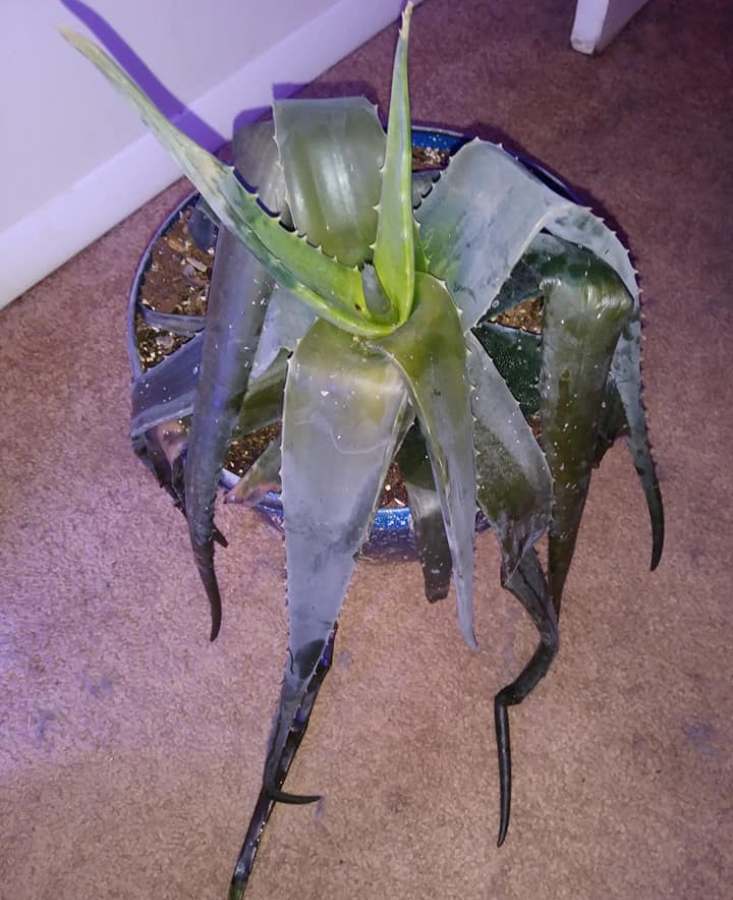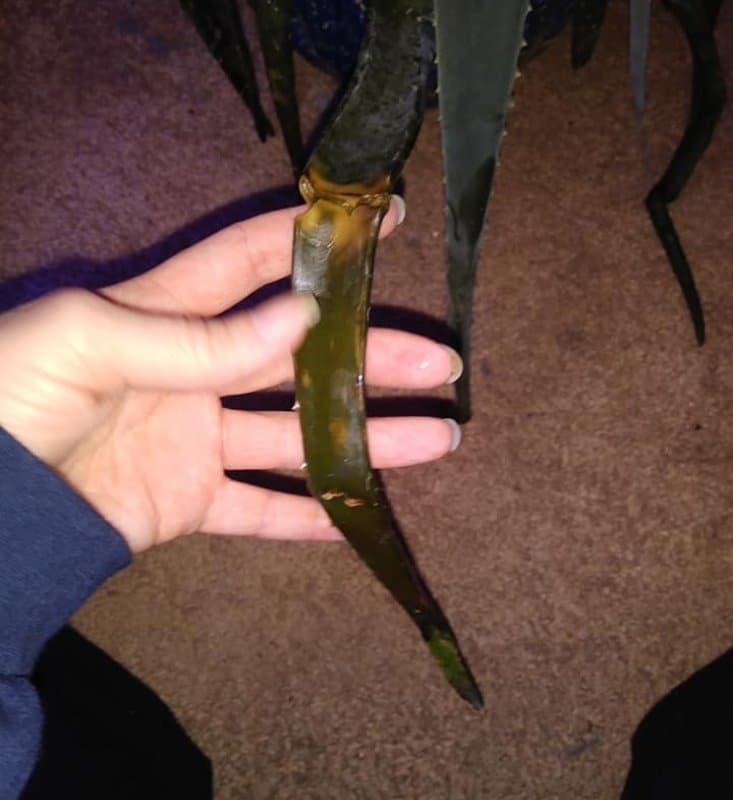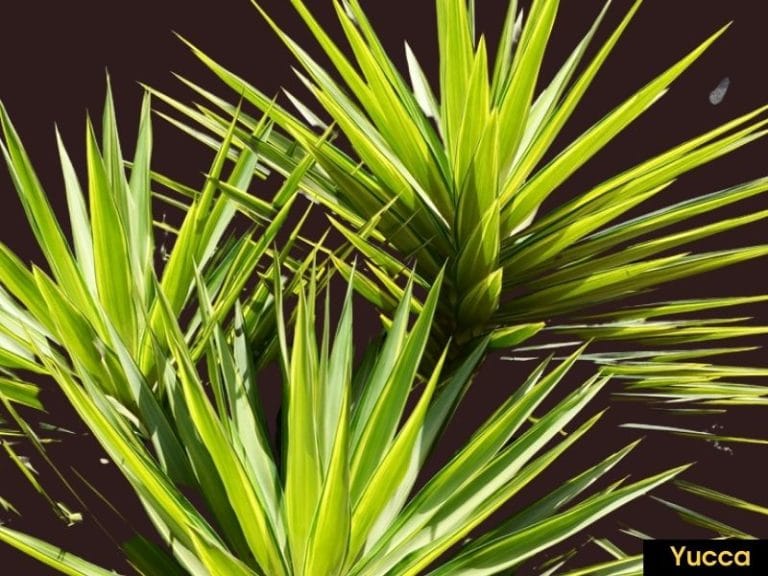Can Aloe Vera Plants Survive Cold and Come Back after Winter?
Aloe plants thrive well in warm temperatures found in the plant’s natural habitat. The plant may need special care in very cold temperatures to help it survive extreme cold during winter.
Can aloe vera survive the cold and come back after winter?
Aloe vera is not cold-hardy and will die when temperatures drop below 50°F for prolonged periods due to frost damage and hard freeze. However, if only a few leaves turn brown-black, the plant can recover and come back with new, healthy leaves after winter.

Below, I’ve explained what temperature is too cold for aloe plants, how to take care of your aloe during winter to prevent frost damage, and how to tell your succulents like aloe vera suffer from cold shock.
Contents:
What temperature is too cold for aloe plant?
Most species of aloe vera cannot survive temperatures below 25ºF (-4ºC) for several hours. Extremely low temperatures cause the gel-like fluid within the aloe’s leaves to freeze. Hard freeze destroys the plant’s cells and well tissues, causing it to die if left in the extreme cold for too long.
However, some species of aloe vera can withstand temperatures as low as 20 degrees Fahrenheit ( -6 to -4 degrees Celsius).
Whatever aloe vera species you want to plant indoors or outdoors, you must understand its temperature tolerance to help you know when to insulate or protect it from the cold.
For instance, the lace aloe can withstand temperatures as low as 13°F, while the Aloe striatula can withstand temperatures as low as 18°F.
Remember that for any Aloe Vera species to survive cold temperatures, the plant must be planted in soils with excellent drainage. Few aloe species, such as Aloe brevifolia and Aloe arborescens can withstand wet soils.
How to Care for Aloe Plants in Winter
Whatever species of Aloe Vera you have planted in pots or outdoors, you must protect it from winter, especially frost, and freeze. For most species, ensure the temperature is not below 30°F or does not reach freezing point.
Here’s how to care for your aloe plant during winter:
1. Move the plant to a warmer area
If you have potted aloe vera, move the pots indoors to warmer areas, especially close to the window, where they will still get enough light. If you planted the aloe plants in the ground outdoors, introduce a temporary shade above the plants.
2. Reduce the watering frequency
Stop watering your outdoor aloe vera plants during winter. Too much watering causes different types of rot, including leaf rot, fungal stem rot, soft rot, and root rot.
For instance, if some roots are rotten, enough water and nutrients won’t be transported to the leaf cells.
Also, ensure good drainage by providing enough holes underneath the pots to facilitate proper drainage.
3. Use frost cloths to protect aloe plants
Another way to protect Aloe Vera plants during winter is using frost cloths. These special clothes are breathable and perfectly designed to keep succulent plants warm when the temperature drops.
Make sure you build a frame around the plant to prevent the frost cloth from touching or interfering with the leaves of the Aloe Vera plant.
You don’t need to purchase any special frames. You can use frost cloth with a lawn chair, stakes, or wire hoops. Ensure the frost cloth covers your potted or in-ground aloe vera plants completely.
Remove the cloth when temperatures return to normal levels. You can also use a blanket as an alternative to a soft cloth.
4. Prune off any frost-damaged leaves
If only a few leaves of your aloe vera plant have been damaged by freeze or frost, I recommend you prune the aloe leaves off using a leaf pruning tool or knife. If many leaves were damaged by freeze or frost, it’s not a good idea to prune all of them at once because the plant will lack the medium for photosynthesis. Provide the succulent with regular care until it revives before you prune dead leaves.
5. Acclimate your aloe gradually after winter
Should you decide to move your indoor Aloe plants outside after winter, especially during the hot summer, do it gradually so the plant can adjust to the new brighter environment.
Gradually exposing your plant to warmer conditions can help prevent sunburn on the aloe plant and allow the succulent to acclimate to the new environment.
Signs of cold shock in Aloe Vera
It is easy to detect signs of cold shock in aloe plants if you pay attention to the changes in their foliage. However, determine if the temperature is cold enough to produce clod shock in succulents. You’ll likely see signs of cold damage if the temperature is extremely low.
Here are the 3 major signs of cold shock in aloe plants:
1. Dark spots/rot

Dark spots on aloe vera leaves are often caused by freezing temperatures common in winter.
The dark spots are caused by a fungal infection that occurs when aloe plants get too much water but less light.
2. Leaf discoloration
Another sign of cold shock is the discoloration of the leaves. You will start noticing red, white, or yellow spots near the leaf veins. These spots are basically dead cells killed by the freeze. The leaves eventually die and fall off.
Note that the pale spots are not the same as yellowing aloe leaves, a common sign of overwatering or underwatering in aloe plants. It’s really important to be able to distinguish these symptoms.
3. Drooping leaves
Aloe leaves bend and droop or curl due to tissue or cell damage. The cold damage the leaf cells causing them to lose their rigidity.
If your Aloe Vera plants are damaged by cold shock, you must relocate them to warmer areas as soon as you spot the signs. Move potted plants indoors, cover them with blankets, or introduce artificial light near the plant.
If the cold severely damages the leaves, they will eventually die and fall off the plant. New leaves will come out after 4 to 6 months with proper light, water, and warmth.
FAQ
Will the aloe vera plant come back after the freeze?
Most aloe vera varieties won’t come back after an extreme freeze. If you leave your aloe plant below freezing temperatures for long, the cold temperatures will blacken the leaves, making them shrivel, crisp, and fall off the plant.
Freeze damage is much more serious compared to frost damage. If your aloe plants have frozen due to winter, you must wait a few weeks to see if they will bounce back. Some species of aloe vera may recover after a light freeze of a few hours.
How much water should I give my aloe vera plant in winter?
Aloe vera plants go dormant during the winter, so they don’t need as much water as they do during the spring and summer. Water your aloe vera plant only when the soil is completely dry. You can water it once a month but check the soil more often if your home is dry.
Should I fertilize my aloe vera plant in winter?
No, you should not fertilize your aloe vera plant in winter. Fertilizing a dormant plant can harm it. Wait until spring to fertilize your aloe vera plant again.
Where is the best place for an aloe plant in the winter?
A bright, sunny spot near a window is a good place to place your aloe plant in the winter. Place the plant under an artificial grow light if there isn’t enough sunlight to ensure it gets at least 6 hours of direct sunlight daily.
References
- Brent McGhie, Butte County Master Gardener: Recognizing and Caring for Frost Damaged Plants
- Jack Kelly and Mary W. Olsen, Extension Plant Pathologist, School of Plant Sciences, University of Arizona: Problems and Pests of Agave, Aloe, Cactus and Yucca



